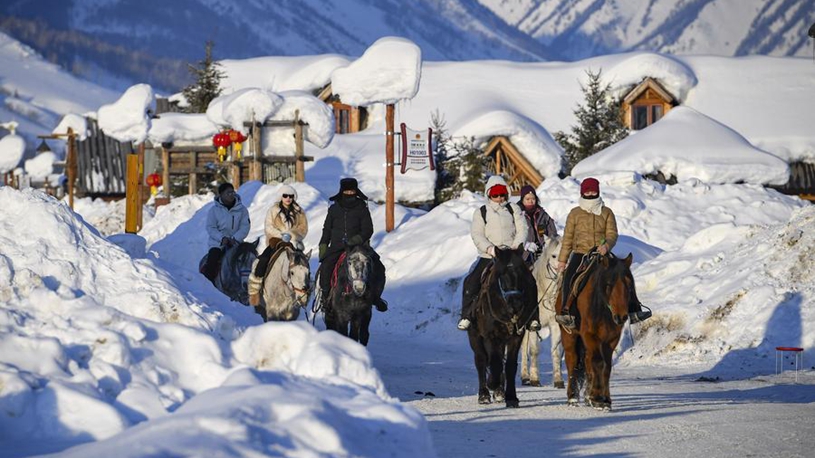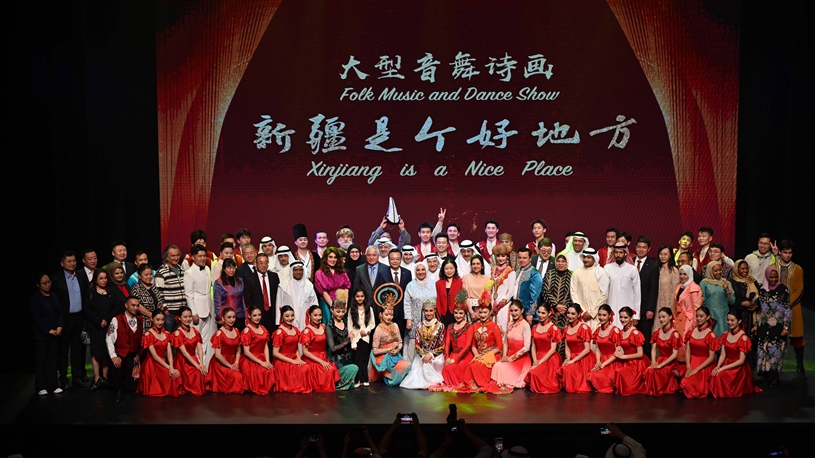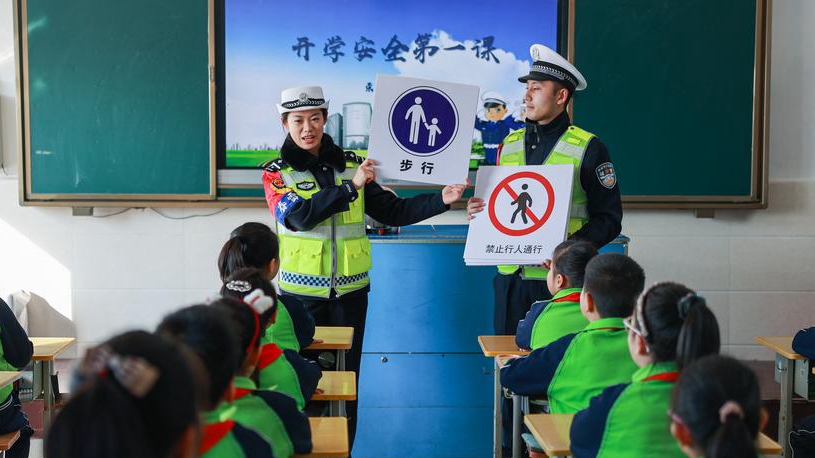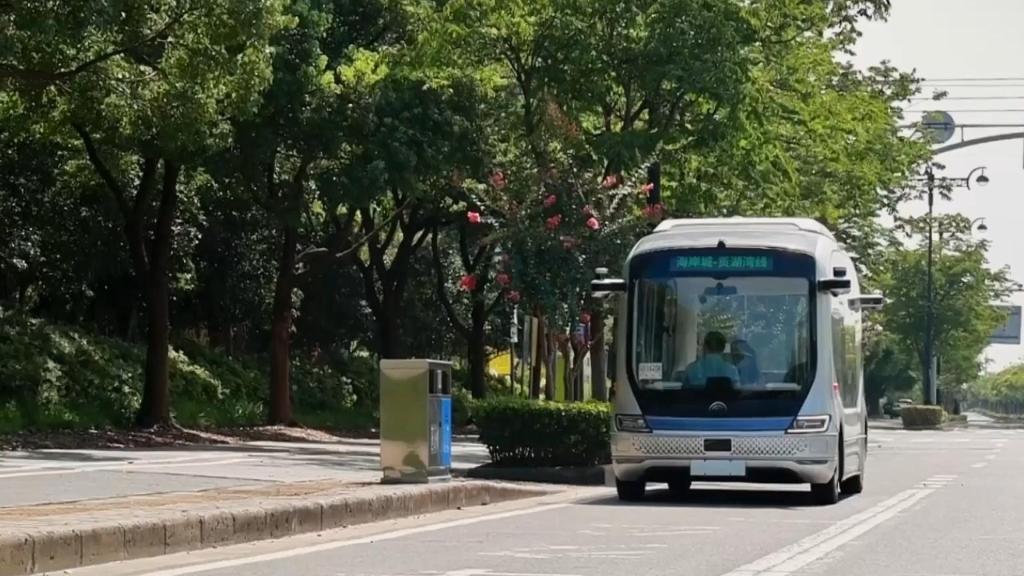
Souvenirs themed with giant pandas are seen at Smithsonian's National Zoo in Washington, D.C., the United States, on May 29, 2024. (Xinhua/Liu Jie)
"We're thrilled to announce the next chapter of our breeding and conservation partnership begins by welcoming two new bears, including a descendant of our beloved panda family, to Washington, D.C.," said Brandie Smith, NZCBI's John and Adrienne Mars Director.
WASHINGTON, May 29 (Xinhua) -- The National Zoo in Washington, D.C., announced on Wednesday it will receive two giant panda cubs, one male and one female, from China by the end of year.
According to a press release by the Smithsonian's National Zoo and Conservation Biology Institute (NZCBI), Bao Li, a two-year-old male panda whose name translates into English as "treasure" and "energetic," will enter the zoo later this year. He is the son of Bao Bao and the grandson of Tian Tian and Mei Xiang.
Bao Bao, Tian Tian and Mei Xiang all stayed in the national zoo previously, and Bao Bao was born there.
Also coming later this year is Qing Bao, a two-year-old female panda. Her name means "green" and "treasure" in Mandarin Chinese.
The NZCBI also announced that it has extended a cooperative research and breeding agreement with the China Wildlife Conservation Association. Now effective through April 2034, the agreement will see the United States and China continue their cooperation in the conservation of the giant panda species.
"Today, I am very glad to share with you some good news: Bao Li and Qing Bao, our new envoys of friendship, will soon fly over the Pacific and join the big family of the National Zoo," Chinese Ambassador to the United States Xie Feng said in remarks delivered at the announcement ceremony held by the zoo.
Xie said China's success in conserving giant pandas is "inseparable from international cooperation," including with the United States, which is "among the first" countries to work with China and make saving the once-endangered species a joint endeavor. Over the decades, the globally adored species has grown to nearly 1,900 in the wild in China.
"We're thrilled to announce the next chapter of our breeding and conservation partnership begins by welcoming two new bears, including a descendant of our beloved panda family, to Washington, D.C.," said Brandie Smith, NZCBI's John and Adrienne Mars Director.
"This historic moment is proof positive our collaboration with Chinese colleagues has made an irrefutable impact. Through this partnership, we have grown the panda population, advanced our shared understanding of how to care for this beloved bear and learned what's needed to protect wild pandas and preserve native habitat," Smith said.
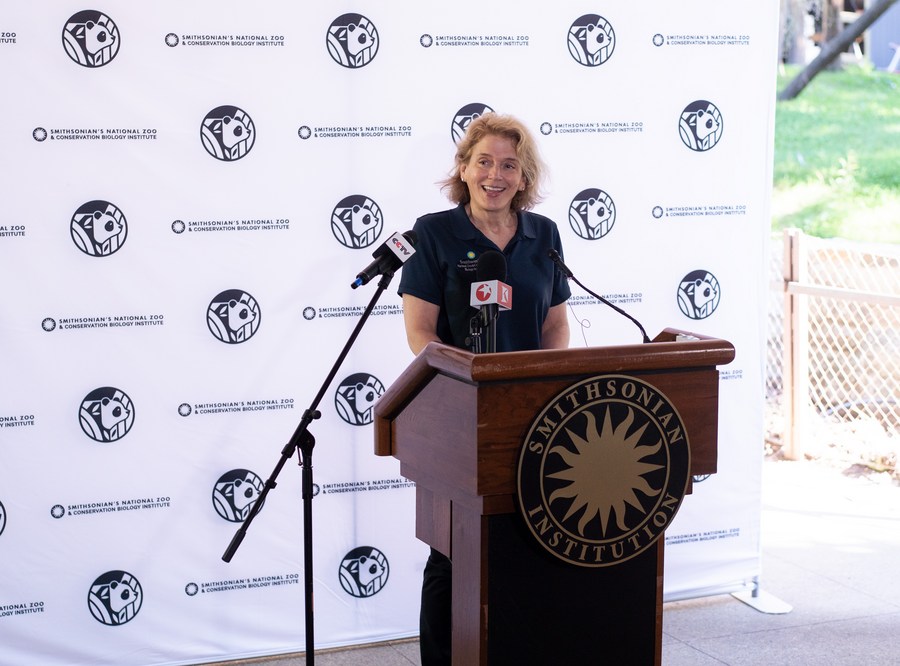
Brandie Smith, John and Adrienne Mars Director of the Smithsonian's National Zoo and Conservation Biology Institute, speaks during a press conference at Smithsonian's National Zoo in Washington, D.C., the United States, on May 29, 2024. (Xinhua/Liu Jie)
Officials and staff at the National Zoo were extremely excited about welcoming the panda pair to the zoo in the months ahead.
"I am so very excited to be able to welcome these two new giant pandas here to the National Zoo," Stephanie Brinley, the zoo's deputy director, told Xinhua during an interview at the ceremony.
"We've had such a wonderful history of (curating and studying) giant pandas here," Brinley said, adding that the fact that new giant pandas are coming back just months after the zoo bid farewell to Tian Tian, Mei Xiang and their son Xiao Qi Ji last fall "is just a real, real exciting time for us."
Brinley said as the son of Bao Bao -- whose birth in 2013 at the zoo made D.C. residents consider her a fellow Washingtonian -- Bao Li's arrival not only is "really important" to the zoo, but also will send an "incredibly important message" to the panda fans across the United States.
"It's almost like we're welcoming Bao Li home, because this is where his family has lived for so long," she said, noting that the male cub's genealogy is a demonstration of "the huge success" the zoo has achieved in its conservation work.
Melissa Songer, a conservation ecologist at the zoo, was among those who traveled to China a couple of weeks ago, during which trip the American team of experts selected Bao Li and Qing Bao for the zoo.
Songer told Xinhua that "a lot of things went into" the selection process, among them the "emotional connection" the zoo's staff felt about Bao Li. It "means a lot" for both the zoo and the city "that we have a family member coming back," she said.
From a scientific point of view, Bao Li and Qing Bao -- "both beautiful and healthy" in China now -- are "genetically diverse," making them "a good pair to be producing offsprings" sometime after they arrive in Washington, Songer said.
While it's still unclear when Bao Li and Qing Bao will be ready to breed cubs, Songer said having them produce offsprings is "definitely one of the plans" for the duration of their time at the zoo.

Souvenirs themed with giant pandas are seen at Smithsonian's National Zoo in Washington, D.C., the United States, on May 29, 2024. (Xinhua/Liu Jie)
Songer was appreciative of the long way American and Chinese conservationists have come in terms of developing and improving the techniques aimed at increasing giant pandas' chances of conceiving and successfully delivering babies. "Every time that we are having this opportunity, we are learning and contributing to the greater body of knowledge around panda reproduction."
Echoing Brinley's aspiration that cooperative partnership with China will continue not only "for the next 10 years at a minimum," but also into a "much longer" future, Songer said having pandas at the zoo "makes a huge difference in terms of what we are able to invest in that continued research and conservation partnership."
The first pair of giant pandas ever in the United States, Ling Ling and Hsing Hsing, arrived at the Washington National Zoo in April 1972 as a gift from the Chinese government, a few months after then-President Richard Nixon's ice-breaking visit to China.
The arrival of Tian Tian and Mei Xiang in Washington in 2000 marked the beginning of China-U.S. giant panda research and conservation cooperation, since which time experts from the two countries have collaboratively bred 17 panda cubs in the United States who survived to adulthood, all of them enthusiastically adored by the people of both countries.
It's thanks to the tireless dedication and loving care of the U.S. and Chinese experts that the giant panda has now been removed from the list of endangered species. They are still considered vulnerable, though.
Brinley said the zoo's panda habitats are undergoing a reconstruction process in order to give Bao Li and Qing Bao the "best-in-class" care, "so that when they show up here, they have a wonderful place to call home and be very happy pandas."
"Be prepared for a party when you come, because all of us are really, really anxious to see you here," Brinley said in conclusion when asked to give some welcoming words to the panda pair. ■

